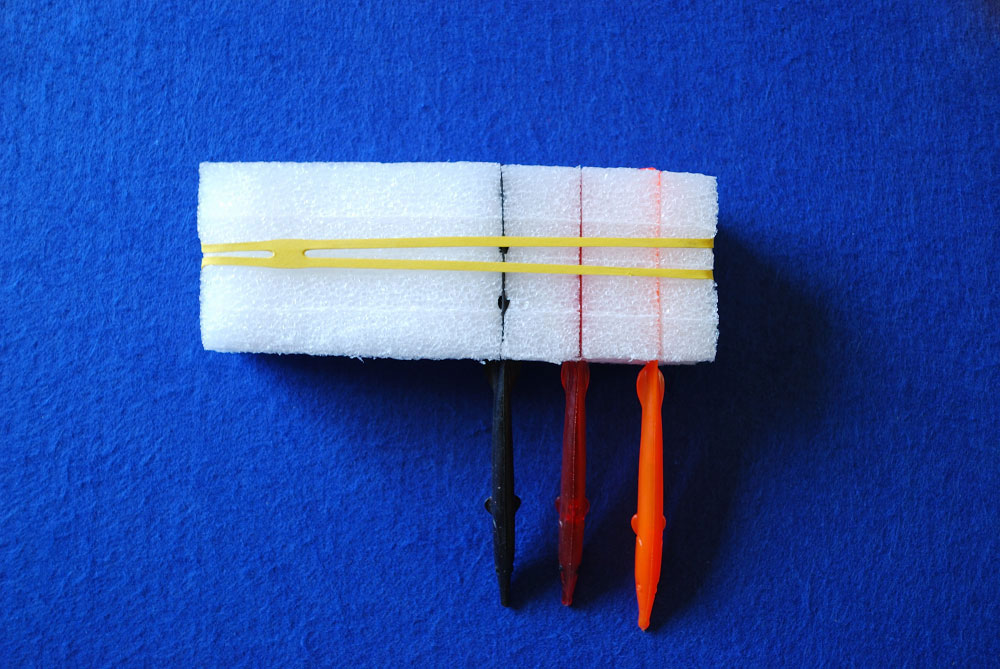Sometimes the simplest of gadgets made at home can make life easier for an angler without having to resort to high-tech solutions.
Redgill used to produce a moulded plastic tail stretcher to maintain the tails of their eels in tip top condition. These are no longer available on the market but a DIY solution is easy to produce which helps keep the tails of Redgill, Eddystone, Raglou or other eels in the optimum straight form for slow retrieving.
The material used is found in a packaging on electrical goods and takes the from of closed cell foam. This foam is easily workable using a thin bladed sharp knife and can be glued to form larger blocks if required. Being closed cell it is resistant to the absorption of water.
The only tools required are a thin bladed long knife and a craft knife.


Cut the foam block to the width required depending upon the length of the tail of the particular eel. The width should be slightly wider than the tail length to provide a modicum of stretch which will maintain the tail shape.
Using the craft knife slots are cut in the foam using a straight edge to provide a depth which will secure the tail.


The eels are then located in the slots and the block of lures can be secured with rubber bands.

Eels whose tails are bent out of shape can be easily brought back to pristine condition by pouring very hot water over them before securing in the tail stretcher.





